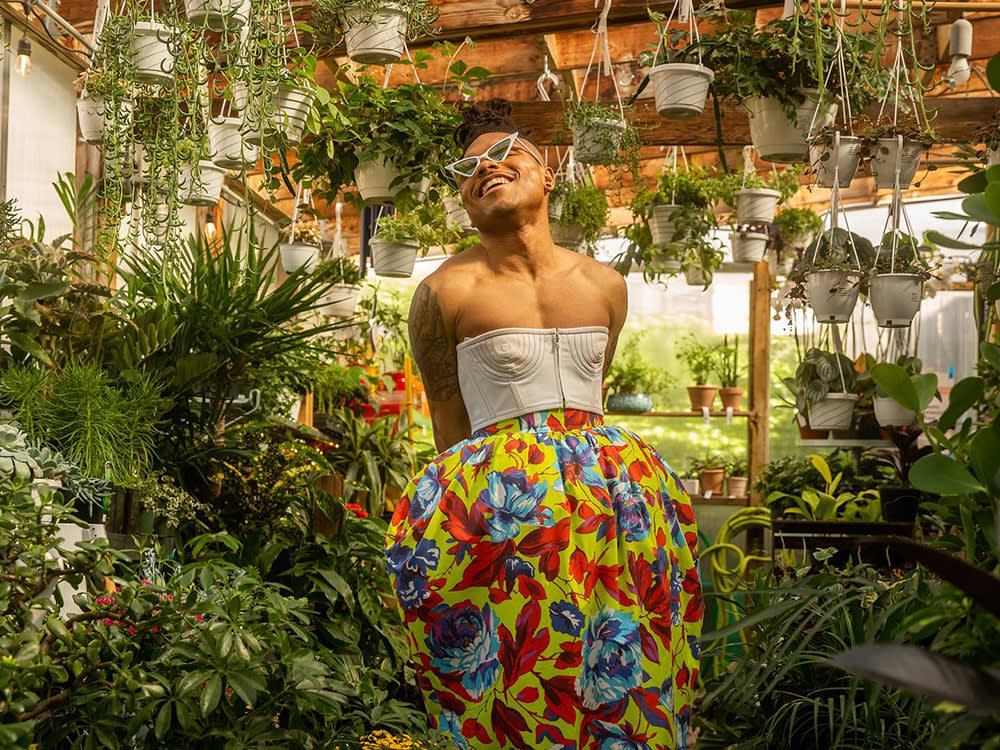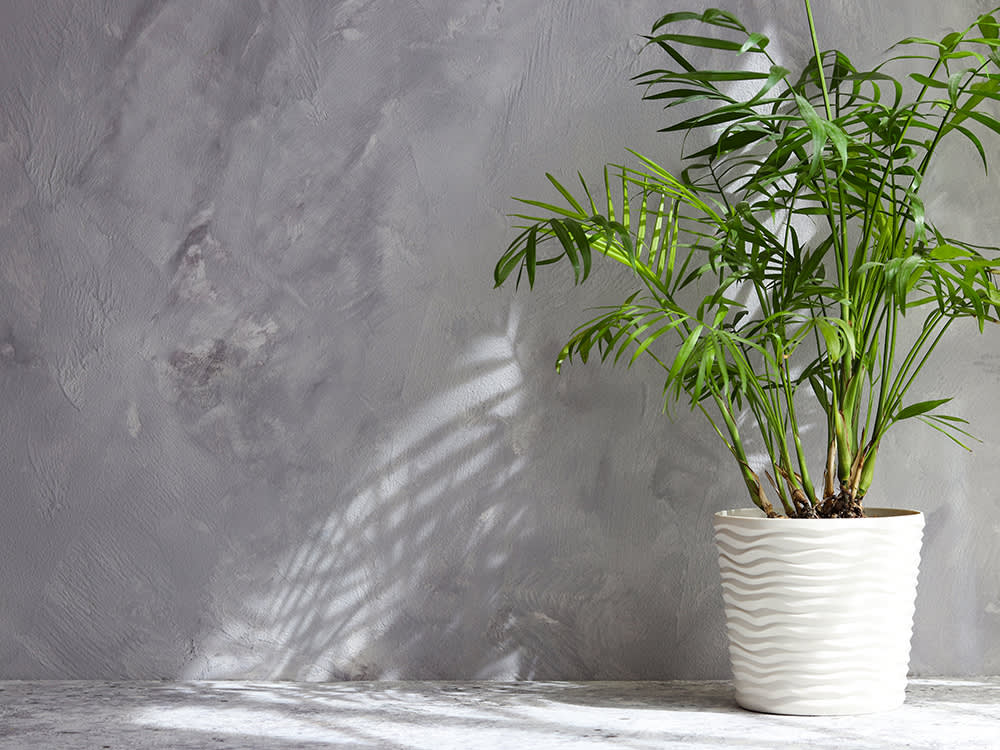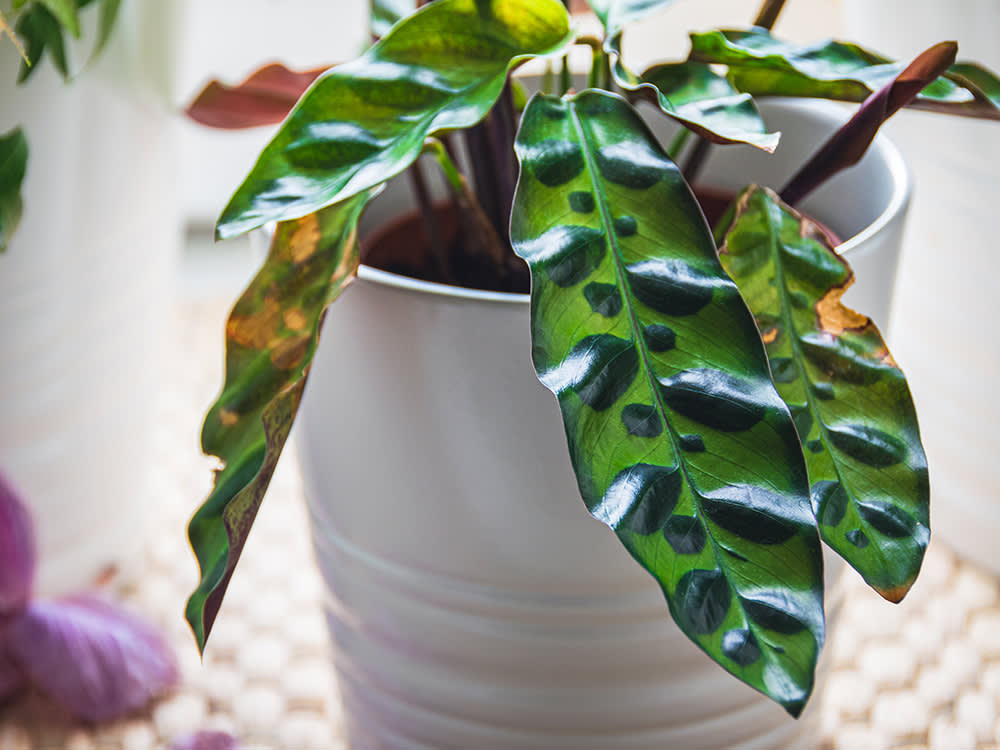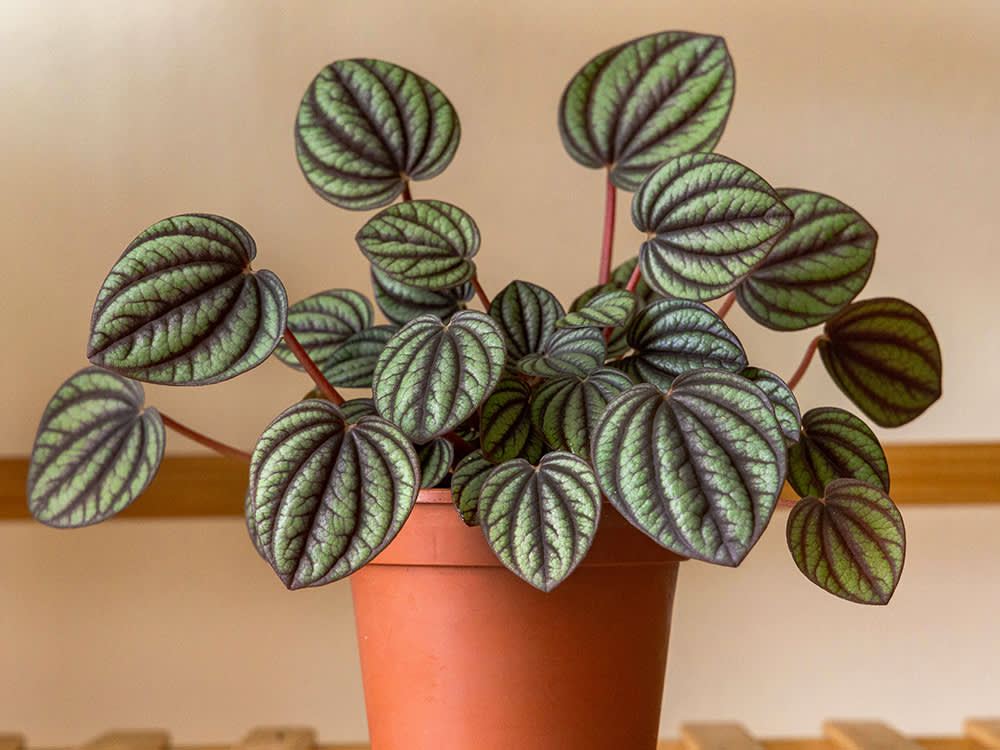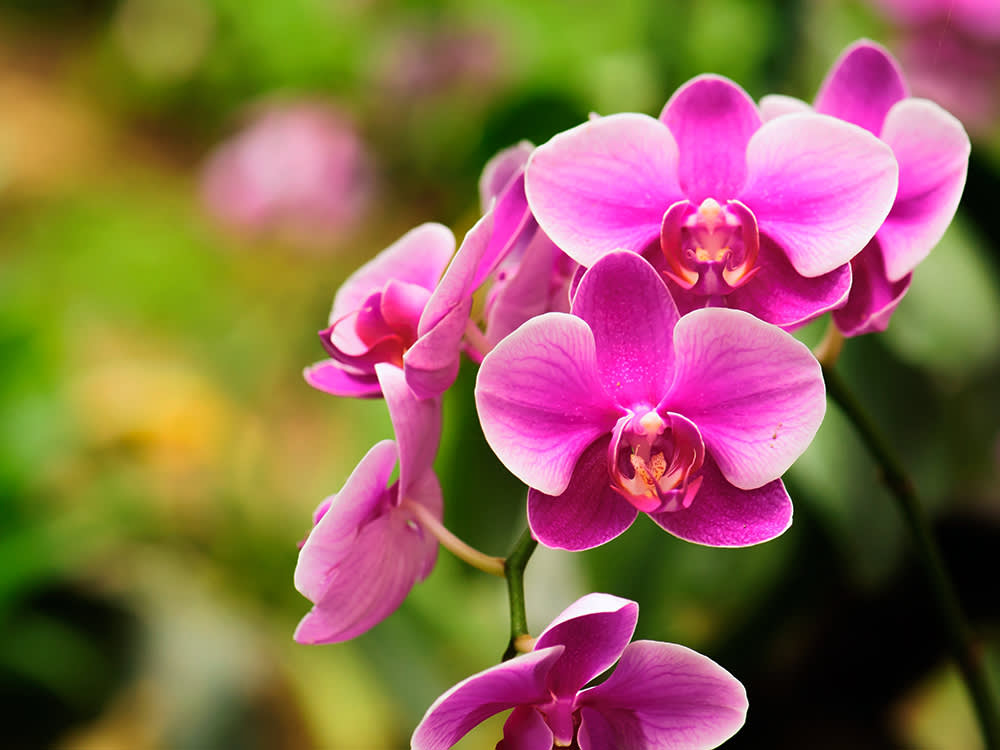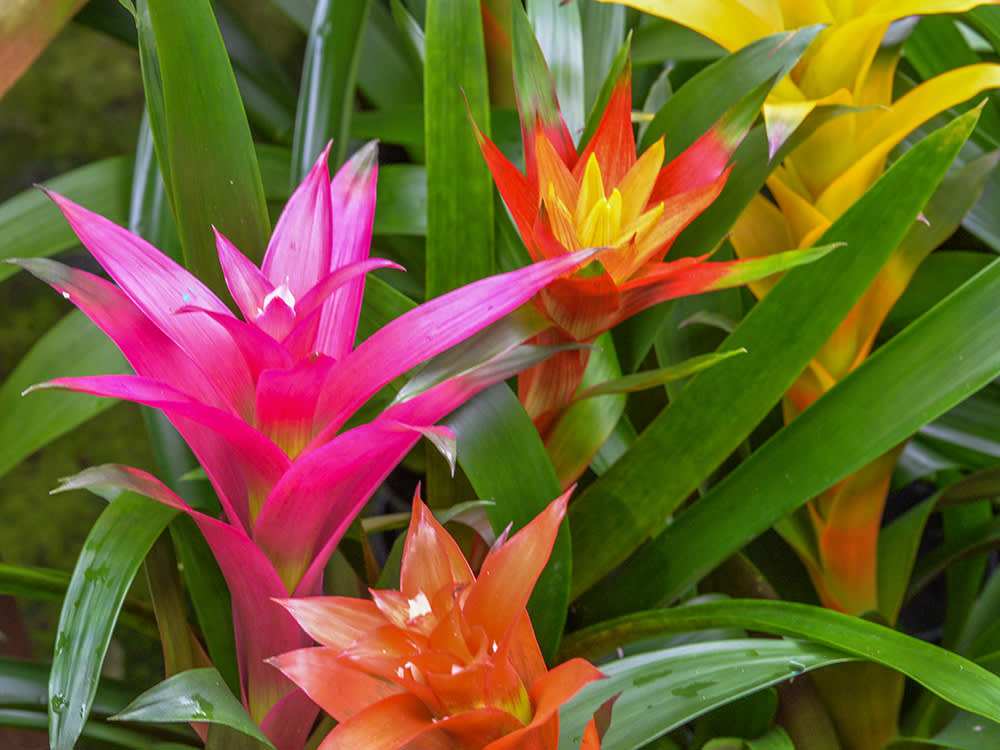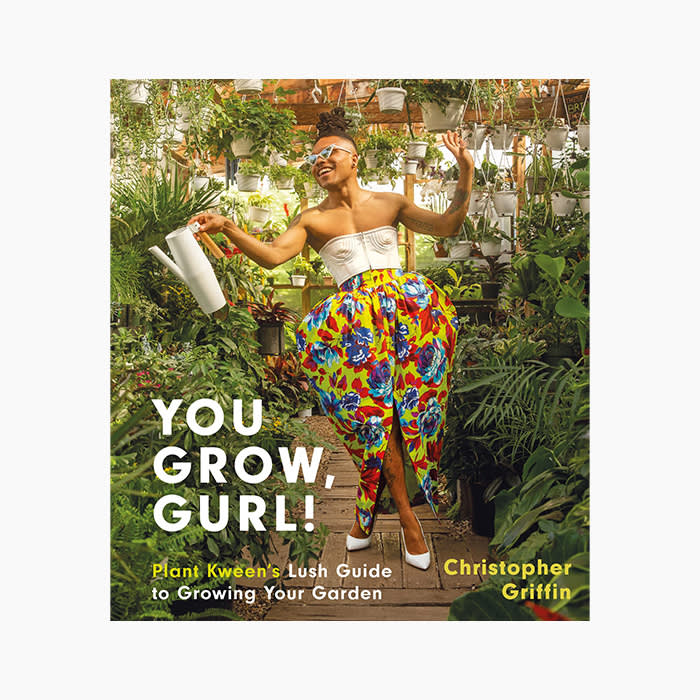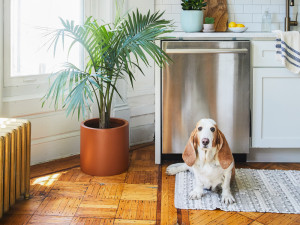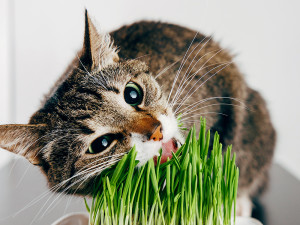The Plant Kween Has Spoken!
We’ve got the fabulous gardener’s take on pet-friendly plants.
Controversial question: Do plants count as pets? If you ask the wildly popular Plant Kweenopens in new tab (aka Christopher Griffin) — author of You Grow, Gurl!, possessor of the greenest of thumbs, and self-professed Plant Parent — that answer is most assuredly “yes.”
This social-media sensation is a bonafide force of nature. They bring us joy each day with tips on how to resuscitate sad plants, read their personalities, and even the music that will help them spring to life. Did we mention they also have more than 200 plants residing in their sun-drenched Brooklyn apartment? (We’ll pause while you wrap your head around that number.)
But as we know all-too-well, our pets don’t always get along. Some plants are toxic, while some dogs and cats are simply too curious. So we reached out to Plant Kween for advice on how to ensure all our kids stay safe with this list of pet-friendly plants — not to mention some essential tips on how to keep them alive.
Butterfly Palm
Native to the tropics of Madagascar, the butterfly palm, or areca palm, is a lush plant consisting of clusters of upward-growing stalks with dark green fronds. If you’re looking for a stand-out plant, the butterfly palm is your guy: it can grow up to eight feet tall. “She may also trigger a cat’s playful swatting and biting instincts, so it’s comforting to know that this queen isn’t toxic for cats or dogs,” says Griffin.
How much do you spend on your pet per year?
The butterfly palm craves bright, filtered light and humid environments, “but I have found that mine is adaptable and doing well with well-draining soil and a standard humidifier,” Griffin adds. Water it every one to two weeks, depending on when the soil dries out. Be aware that this plant is susceptible to overwatering. You’ll know it when you see it, because its leaves will start to yellow.
Rattlesnake Plant
Despite its threatening, desert-evoking name, the rattlesnake plant, or the Calathea Lancifolia, hails from Rio de Janeiro in Brazil. With its bundle of long, wavy striped leaves that are dark green on top and purple on the bottom, this plant is eye-catching, to say the least. “The Calathea Lancifolia (aka Ms. Rattlesnake Plant) is a green gurl I’ve had for quite some time and I’ve found her to be quite easy to care for and quite resilient to my newbie plant parent mistakes back in the day,” says Griffin.
Like other prayer plants, its leaves point straight up at night and fan out in the daylight, helping it to catch the light. Your rattlesnake plant will enjoy filtered light. “I’ve witnessed that too much direct sunlight will fade the beautiful green spots on her leaves,” warns Griffin. It’s also a bit of a diva. “This queen is native to Brazil’s tropical climate so she enjoys warm temperatures and humidity. I keep her away from cold drafts in the winter and I have her close to my humidifier.”
Rattlesnake plants like a well-draining soil that stays moist, but give it too much water and you’ll get yellow leaves. The key is to quench its thirst frequently in the summer months in order to prevent the soil from drying out. Discard any water that comes out through the drainage hole. In winter, cut back watering to every two weeks.
Peperomias
The name “peperomia” refers to a genus that includes more than 1,500 species of diverse, succulent-like tropical plants. Some of them, like the tri-colored Peperomia clusiifolia, are very beginner-friendly plants that are forgiving of mistakes. Others, like the delicate Peperomia albovittata are better suited for a more experienced plant parent. Thankfully, all of them are safe to have around cats and dogs.
We’re big fans of the adorable string of turtles, a trailing plant whose round shells resemble a turtle’s shell. If you’re disappointed that pretty philodendrons are toxic to pets, look for the vining Peperomia serpens. If you want a plant with stand-out leaves, then you can find the Peperomia argyreia, better known as the watermelon peperomia, at practically every nursery.
Orchids
Back in the Victorian era, the upper crust’s ravenous captivation by orchids was known as “orchidelirium.” Collectors would pay upwards of thousands of dollars and the most orchid-obsessed would even hire explorers to pluck flowers from the wild for the purpose of being put on display for the clout. Their delicate, fragrant flowers can be brightly colored or speckled, so there’s always one that will fit in with your decor.
They’re known for being fussy, but as with all plants, prolonging their life is all about replicating the plant’s natural environment. In the wild, orchids grow in trees in warm, humid, environments. You should never repot an orchid while it’s in bloom, but when the last flower falls, repot it in a special orchid mix. These are typically made of bark and sphagnum moss.
The watering routine should change from season to season. In summer, water your plant once a week until the water runs out of the drainage hole and fills up the humidity tray — a terracotta plate filled with pebbles that the pot sits on. As the water evaporates from the tray, it’ll help to replicate the orchid’s natural humid environment. During winter, cut back watering to once a month and keep it near a humidifier. Lastly, orchids need bright, indirect light.
Spider Plant
Hailing from the tropical environments of the central and southern African continent, spider plants were popular in Victorian England, where they were called “ribbon plants.” These days, spider plants are one of the most common additions to indoor jungles due to their adaptability, resilience, and how attractive they look in hanging planters. “I’ve recently welcomed this queen into my plant fam and have found that with well-drained soil and bright indirect light, she will flourish,” says Griffin.
Spider plants grow in rosettes of long, thin, arched leaves. They can be solid in color, or variegated, and some even have curly leaves. These ones have earned the nickname “Bonnie.” They’re also known for sprouting long, thin stems that produce spiderettes, baby plants that you can snip off and plant in soil once their roots are about an inch long. They make great gifts for your pet-parent friends!
“Her small spiderettes are quite easy to propagate,” says Griffin, “and fun fact, she is actually a green gurl that prefers a semi-potbound environment, so it is recommended to repot her only when she has visibly outgrown her planter!”
Bromeliads
These adaptable tropical plants are beloved for their long, thick leaves that grow in a rosette and can come in shades of green, purple, red, and orange. Some are striped, like a snake plant (which is toxic to cats and dogs) while others are monochromatic.
Bromeliads are tropical in nature, but will adapt to a wide variety of environments. Since they grow on the jungle floor, they thrive best in a warm environment in bright, indirect light and enjoy moist soil. Water your plant when the top two inches of the soil are dry by filling the cup that sits at the center of the leaves. Also, keep this plant on a humidity tray.
Towards the end of their life, bromeliads may sprout flamboyant, spiky flowers. Shortly after the flower wilts, the plant will start to die. But luckily, don’t label yourself a plant killer. During this time, the plant will produce pups near the base. Once the pups begin to detach from the parent plant, you can cut them free with a clean pair of gardening shears and pot them in fast-draining soil.
